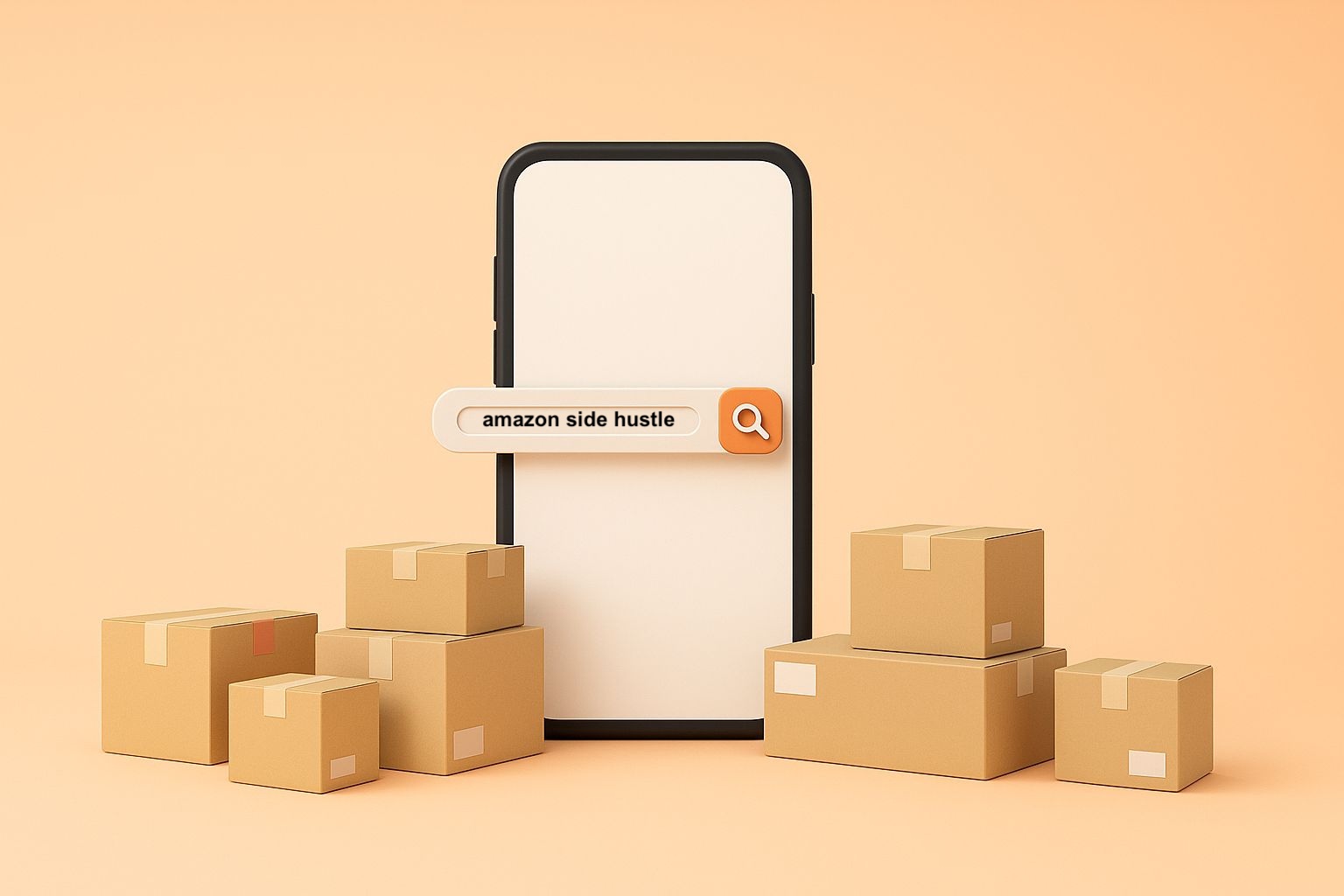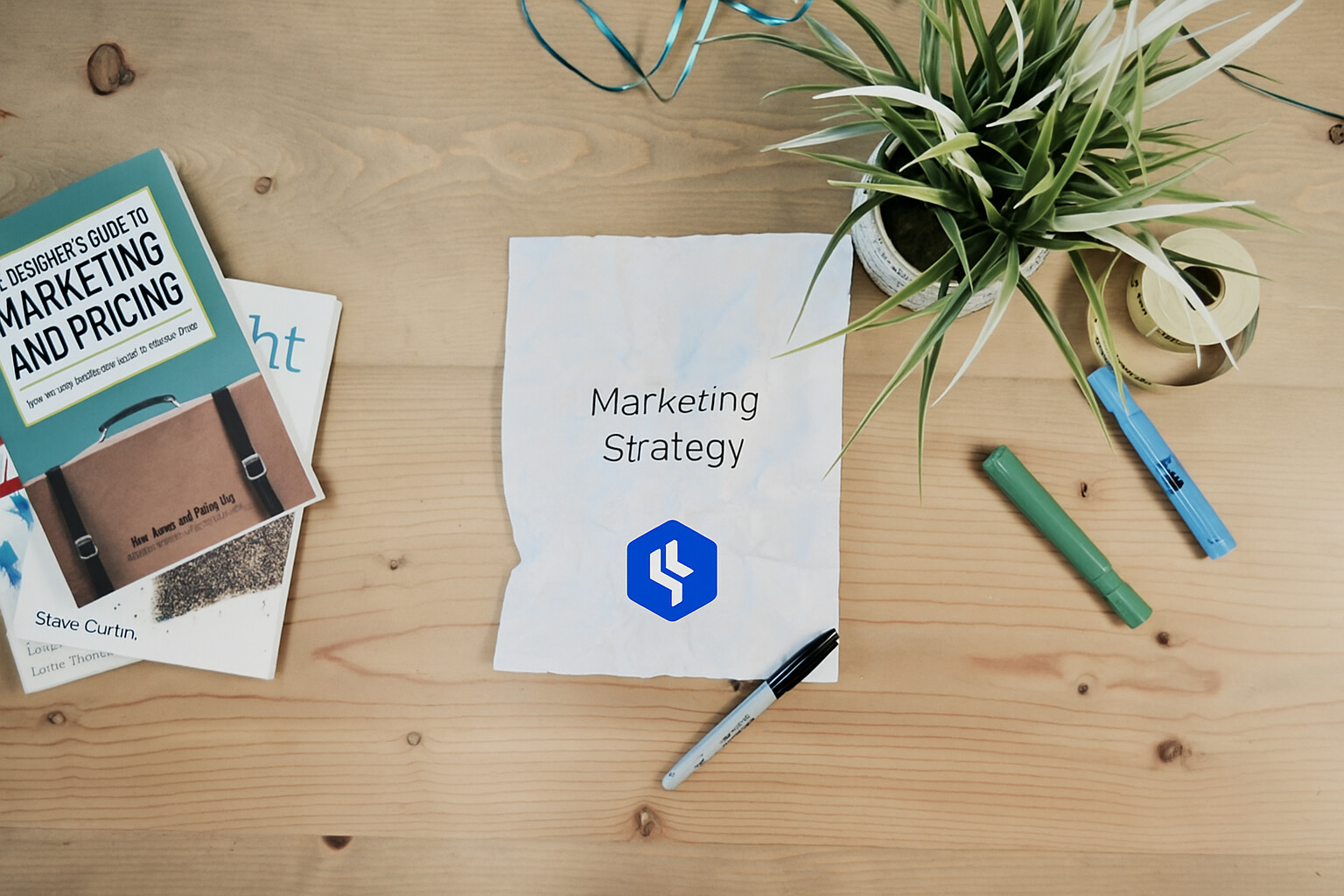How to Sell Books on Amazon Successfully

Selling books through Amazon. Still a smart move in 2025? Books were the first product category Amazon ever offered – but for many sellers today, it’s not the first niche that comes to mind. Over the years, some even questioned the future of physical books altogether, predicting a full shift to digital reading and a decline in demand. This begs the question: why are we writing an article on how to sell books on Amazon?
You guessed it, because books are making a comeback.
#BookTok has taken over social media, fueling renewed interest in reading from a format you can smell, feel, and spill coffee over without having a heart attack (unless it just spilled over your signed, first-edition of The Hobbit). Publishers, influencers, and online bookstores alike are thriving on platforms like TikTok and Instagram. Meanwhile, industry revenues are on the rise again, and online book sales continue to grow steadily with a CAGR of 2.2%, estimating an increase from $137 billion to $165 billion by 2031.
Why books are worth a closer look for Amazon sellers in 2025
What about competition? Well, you are selling on the world’s most successful e-commerce platform – so, yeah, there’s going to be competition. Just like in any Amazon category, success depends on your ability to find the right products, price competitively, and manage your listings well. But if you’re looking for a low-risk way to get started – or a niche with long-tail profit potential – the book market deserves your attention.
In this article, we’ll walk you through the pros and cons of selling books on Amazon, who this model works best for, and when it might not be worth your time.
How to Sell Books on Amazon: Used Books or New?

Most sellers who sell books on Amazon sell used books. And for good reason, taking into consideration that selling new books is quite costly and – to a certain degree – are being gatekept. It’s no secret that new books are typically distributed by publishers or wholesalers, which means that the buyer has to purchase large quantities. Such an initial investment is often not feasible for many marketplace sellers. Additionally, most new goods in the book segment are sold by Amazon itself, making it even harder to build a profitable business.
On the other hand, selling used books on Amazon is more rewarding. Typically, no huge investments are required, and sellers have better chances of competing against the competition. At the same time, sourcing the products can be more demanding and time-consuming, seeing as you can’t buy them in bulk.
| New books | Used books |
| Costly | Low investments |
| Large purchase quantities | Time-consuming sourcing |
| Amazon as a direct competitor | Less competition |
| B2B business relationship required | No business relationship with wholesalers |
For these reasons, and because there are hardly any independent sellers selling new goods, we will focus from this point on how to sell used books on Amazon.
Selling Rare Books on Amazon
When you’re figuring out how to sell books successfully on Amazon, you should factor in selling rare books as one of the more profitable book categories. On Amazon, there are few things to take into account when you have rare books to sell on Amazon.
You sell used books to buyers and rare books to collectors. Buyers purchase a book because they’re interested in its content, collectors value provenance, condition, and edition details. You sell common books at a competitive price, you have to do so, because you want to win the Buy Box. With rare books, pricing is more reflecting the scarcity and collector demand, not undercutting your competition. Also, rare books require precise condition grading, clear photos of unique features (signatures, first edition markers), and detailed historical notes, not just a short description. Rare books are often listed as “Collectible” rather than simply “Used,” and packaging and shipment must be done with extra care, often adding tracking and insurance to protect high-value items.
📦 Selective Sourcing
Top sellers pass on over 99% of books they find, focusing only on rare, collectible, or in-demand titles like first editions and signed copies.
Selling Books on Amazon with FBA and FBM
If you’re deciding between FBA and FBM for selling books, it really comes down to who’s handling the storage, packing, and shipping.
With FBA, you send your books to Amazon, and they take care of everything – storing them, packing them, shipping them, and even handling customer service. Your listings also get the Prime badge, which can help boost sales. However, you’ll also pay higher fees, follow strict prep rules, and risk long-term storage charges if your books don’t sell quickly. FBA is great if your books move fast and you’d rather not deal with shipping yourself.
With FBM, you store and ship the books yourself. You save on FBA storage fees and have full control over how each order is packed – handy if you’re selling rare or fragile books. But you’ll spend more time managing orders, and without Prime, you may lose some buyers. FBM works well for slow-moving or special-condition titles where hands-on handling matters.
In short, FBA gives you convenience and reach, while FBM gives you control but more work.
| Aspect | FBA (Fulfilled by Amazon) | FBM (Fulfilled by Merchant) |
| Storage | Amazon stores your books in their warehouses | You store books yourself (home, office, warehouse) |
| Fulfillment | Amazon packs and ships orders | You handle all packing and shipping |
| Customer Service | Amazon manages returns, refunds, and customer inquiries | You manage all customer communication and returns |
| Prime Eligibility | Automatic Prime badge, boosting visibility and potential sales | No Prime badge unless enrolled in Seller Fulfilled Prime (difficult to qualify) |
| Fees | Higher fees (fulfillment + storage) | Lower Amazon fees, but you pay for shipping and packaging |
| Control | Limited control over storage/handling; books must meet Amazon’s prep standards | Full control over storage, packaging, and shipping methods |
| Best For | Fast-moving, high-demand titles where Prime can drive sales | Rare, collectible, slow-moving books or low-volume selling |
| Risks | Long-term storage fees for slow sellers; possible damage in Amazon’s warehouses | Slower delivery speeds can reduce sales; more time spent on fulfillment |
Setup Process: Step-by-Step to Your First Sale
Create a Seller Account
Before you can sell anything on Amazon, you’ll need to set up a seller account. You’ll have the choice between a Professional and Individual plan. The latter is good for testing the waters, the former is the way to go if you are serious about starting on Amazon full time or as a side hustle.
Listing Books
Once your account is set up, it’s time to start listing. The easiest way to do this is by searching for the book’s ISBN (usually found on the back cover). Once you’ve found the matching listing, just click “Sell Yours” and follow the prompts.
There are various choices when it comes to condition, be sure to choose the right one – whether it’s New, Like New, Very Good, Good, or Acceptable. Check what other sellers are charging and set a competitive price based on this.
If you’re unsure where to start, go with categories that consistently perform well: textbooks, self-help titles, popular fiction, or collectible editions are all solid options.
Pricing Strategy
Amazon is a customer-first company and customers love a good bargain. This is why a dynamic pricing strategy on Amazon are just as important as a good product. Especially when it comes to used books, prices can fluctuate immensely depending on the quality and quantity of the book. All the more important that your pricing stays agile and dynamic. Learning how to resell books on Amazon also involves keeping your competitors under close watch and reacting immediately to their price changes.
Keeping your prices agile and responsive to these market shifts is key. A well-tuned dynamic repricing strategy not only helps you capture seasonal demand but also boosts your Buy Box win rate. For instance, adjusting your price just €0.50 below a competitor’s can shift your Buy Box share from 40% to 70%, resulting in significantly higher sales volume. As your inventory grows, using a dynamic repricer becomes less of a luxury and more of a necessity – not only to increase revenue but also to free up your time for tasks that require real strategic thinking.
As your inventory grows, using a dynamic repricer becomes more of a necessity than a nice-to-have. First of all, it generates you a higher Buy Box share and therefore more revenue, but mainly, it keeps your schedule free for more important tasks that require actual brainpower.
Product Sourcing: How to Find a Good Bargain?
Before you learn how to sell books on Amazon, you have to know where to buy them first. Yes, we are aware how fundamental that sentence sounds, but the truth is that there are many places to source from and knowing your way around can save you a lot of money.
Basically, it doesn’t matter much where you source your goods. Reselling and arbitrage are legal, both on Amazon and on other platforms. The only important thing is that the purchase price is below the selling price and that the profit margin achieved is worth the effort.
⏳ Average Sell-Through Time
The average hold time before a sale is 3–4 months, meaning patience is key when selling niche or high-value books.
Listing Optimization: SEO & Conversion Boosts

Figuring out how to make money selling books on Amazon involves presenting them the right way. This means your books have to do two things: show up in search results and convince buyers to click the “Buy Now” button. Here’s how to make sure you’re doing both.
Start with a Keyword-Rich Title
Put yourself in the buyer’s position and imagine what he/she would type into the search bar. Include obvious elements such as title and author, but don’t stop there – add pertinent keywords that describe what the book is about. Example: instead of “Healthy Recipes,” try something like “Keto Meal Prep Cookbook for Beginners – 100 Low-Carb Recipes.” The more specific, the better.
Pick the Right Category
Yes, this sounds obvious but many sellers still get it wrong, believe it or not. If you’re selling textbooks, put them under textbooks. If it’s a business how-to, don’t bury it under general nonfiction. Picking the right category helps the right people find your listing faster.
Use a Clear, High-Quality Cover Photo
Especially if you sell used books, be sure to upload a crisp clean image of your book cover. If there’s any damage or wear, definitely include an extra photo or two showing the actual book – your buyers will appreciate the transparency.
Be Honest About the Condition
Communicate anything that deviates from the original form: whether it’s notes in the margins, a folded page, or a missing dust jacket. You don’t have to scare people off, but don’t try to hide anything either. A clear, honest condition note saves you headaches later with returns or bad reviews.
Write a Description That Actually Sells
Use the description space to tell buyers what makes the book worth buying. Give a quick overview of what it’s about, who it’s for, and why it’s valuable. Mention if it’s a first edition, signed copy, or a rare find. Even something simple like “Great for students” or “Perfect for collectors” helps buyers make a faster decision.
📚 Bundling Strategy
Deals like “Buy 3, Get the 4th Free” help spread shipping costs over multiple items, boosting profitability per order.
How to Sell Your Books on Amazon? Best Practices and Common Pitfalls
As lucrative as it can be to sell books on Amazon, there are a few things to consider before you start that will make your journey all the more successful.
Final Thoughts

Although books were long considered a less lucrative sales product, a positive trend is now emerging: The book market is growing again, and platforms like TikTok are generating new enthusiasm – the physical book is experiencing a renaissance. Selling books on Amazon can therefore be profitable, especially in the area of used books. Less capital is needed here, and there are good chances to compete against the competition.
Selling new books is difficult for smaller retailers. Amazon itself usually offers many new titles, and the high purchase quantities as well as price competition are additional hurdles. In contrast, reselling used books – whether through bookstores, flea markets, or online marketplaces – is easier to start and less costly.
Ultimately, selling books on Amazon can generate a lucrative side or main income if one is familiar with the peculiarities of the market and is willing to invest in marketing and product sourcing.
Frequently Asked Questions
Yes, it’s possible to sell new and used books on Amazon. The platform even offers you two fulfillment options: Fulfillment by Merchant (FBM) and Fulfillment by Amazon (FBA), where Amazon takes care of the fulfillment itself.
Bestsellers and in-demand titles often sell well, as do guides, textbooks, collectibles, and rare editions. Categories such as biographies, self-help, religion and spirituality, as well as health and fitness are also popular.
To sell books on Amazon, you need a seller account – either an Individual or a Professional account. In Seller Central, the items can then be listed by entering the ISBN.
The profit per book varies greatly depending on the category, demand, condition, and selling price. On average, profits are often in the single- to low double-digit euro range, since sales fees and, if applicable, shipping or storage costs must be deducted.
The costs depend on whether you use an Individual or a Professional seller account. The Individual account charges a fee of €0.99 per item sold, while the Professional account costs €39.99 per month. In addition, sales fees apply, which vary depending on the book category and price.
Amazon KDP makes it possible to publish your own eBooks or paperbacks. All you need is an Amazon account, a finished book file (in eBook format or as a print template for paperbacks), and a book cover.
Yes, using Amazon KDP is free. Authors don’t pay any setup fees, but Amazon retains a percentage of each sale as a commission. Royalties are usually 35% or 70%, depending on the selling price and other factors.
Image credits: © stock.adobe.com – Shanti / © stock.adobe.com – hobonski / © stock.adobe.com – Omri / © stock.adobe.com – eugen







